As the temperature drops, there’s nothing quite like soaking in a warm hot tub on a chilly winter evening. However, cold weather presents unique challenges for hot tub maintenance. To ensure your hot tub remains in peak condition all season long, it’s essential to take the right precautions. From water chemistry to insulation and regular upkeep, keeping your spa in optimal shape will ensure a hassle-free winter soaking experience. Plus, with the help of Sutro, maintaining perfect water balance has never been easier. In this guide, we’ll walk you through the best practices for maintaining your hot tub during cold weather.
1. Keep Your Hot Tub Covered
One of the most effective ways to maintain heat and reduce energy consumption is by using a high-quality, insulated cover. During the colder months, heat loss can be significant, leading to higher energy bills and increased strain on your hot tub’s heating system.
Tips for Covering Your Hot Tub:
-
Use a well-fitted, insulated cover to trap heat efficiently.
-
Regularly check for damage or gaps in the cover.
-
Invest in a thermal spa blanket for extra insulation.
-
Remove snow and ice buildup to prevent weight damage.
2. Monitor Water Temperature Consistently
It’s crucial to maintain a consistent water temperature in cold weather. Sudden drops in temperature can cause freezing, which may lead to costly repairs or even permanent damage to your hot tub’s pipes and components.
Best Practices:
-
Keep your water temperature set between 97°F and 104°F to prevent freezing.
-
If you’re leaving home for an extended period, keep the temperature at a minimum of 90°F.
-
Use a Sutro Smart Monitor to track temperature fluctuations and adjust as needed remotely.
3. Maintain Proper Water Chemistry
Cold weather can impact the chemical balance of your hot tub water. Fluctuations in temperature, reduced usage, and increased cover time can all contribute to imbalances that lead to bacteria growth, cloudy water, or even scale buildup.
Water Chemistry Checklist:
-
pH Levels: Keep the pH between 7.2 and 7.8 to prevent scaling and corrosion.
-
Alkalinity: Maintain between 80 and 120 ppm for stable water chemistry.
-
Sanitizer Levels: Use chlorine or bromine to keep bacteria and algae at bay.
-
Calcium Hardness: Keep within 150-250 ppm to prevent foaming or scaling.
With Sutro, you can monitor these levels in real time, ensuring your water remains perfectly balanced without the guesswork.
4. Keep Your Water Circulating
Stagnant water is at a higher risk of freezing in low temperatures. Most modern hot tubs have freeze protection settings that automatically circulate water when temperatures drop.
Tips to Ensure Proper Circulation:
-
Set your hot tub to run periodically if it doesn’t have an automatic freeze protection mode.
-
Check for any blockages in the filtration system.
-
Leave jets open slightly to allow movement of water.
-
Consider running the pump continuously during extreme cold spells.
5. Regularly Check for Leaks
A small leak in warm weather might not seem like a big deal, but in cold temperatures, it can quickly escalate into frozen pipes and costly damage. Inspect your hot tub regularly to catch leaks early.
How to Spot and Fix Leaks:
-
Look for puddles or excess moisture around the base.
-
Check hoses, connections, and seals for cracks.
-
If you notice water loss, use a Sutro Smart Monitor to track water levels and identify fluctuations.
-
Contact a professional if the leak is significant.
6. Drain and Refill Before Winter
If your hot tub needs a water change, do it before winter arrives. Draining in freezing temperatures can be challenging, and refilling with cold water may put excessive strain on the heater.
Best Time to Drain and Refill:
-
Late fall, before temperatures drop significantly.
-
If necessary, perform a partial water change instead of a full drain during winter.
-
Always use a Sutro Smart Monitor to check water balance after refilling.
7. Protect Against Freezing
In case of a power outage or heater failure, it’s crucial to prevent freezing in your hot tub.
Freeze Protection Tips:
-
Keep an insulating blanket or hot tub cover secured at all times.
-
Use a submersible pump or a spa heater backup if power is lost.
-
In an emergency, add a small space heater in the cabinet to prevent pipes from freezing (only if safe and dry conditions allow).
8. Clean and Maintain Filters
Dirty or clogged filters can reduce water circulation, making it harder to maintain temperature and cleanliness.
Filter Maintenance:
-
Rinse your filters every 2 weeks.
-
Deep clean with a filter cleaning solution once a month.
-
Replace filters annually or as needed.
Using a Sutro Smart Monitor, you’ll be alerted to changes in water clarity, helping you determine when a filter cleaning is necessary.
9. Be Mindful of Usage in Extreme Weather
While hot tubs are designed for winter use, extreme conditions can be tough on your spa. If temperatures drop well below freezing for an extended period, take extra precautions.
Things to Consider:
-
Avoid excessive opening of the cover to retain heat.
-
Limit soak time in extreme cold to avoid body shock when exiting.
-
Always dry off quickly and wear warm clothing after use to prevent cold exposure.
Conclusion
Maintaining your hot tub in cold weather doesn’t have to be a daunting task. By following these essential tips—covering your spa, monitoring water chemistry, keeping circulation steady, and preventing freezing—you can enjoy a warm, relaxing soak all winter long. With Sutro, you can easily track water quality and temperature without the hassle of manual testing, ensuring your spa remains in perfect condition no matter how cold it gets outside.
Ready to take the guesswork out of winter hot tub maintenance? Try Sutro today and enjoy worry-free relaxation all season long!

